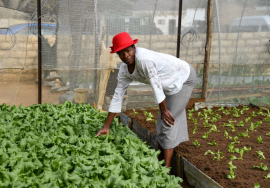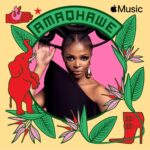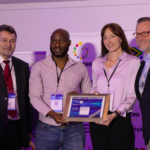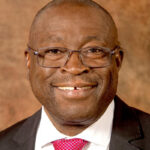The Land Bank, in partnership with the Department of Agriculture, Land Reform and Rural Development (DALRRD), has relaunched the Blended Finance Scheme to assist historically disadvantaged farmers.
Blended Finance is a facility that uses grants to complement loans provided by financial institutions. It was developed to improve access to and the affordability of finance for farmers.
Unveiled on Monday by Agriculture, Land Reform and Rural Development Minister, Thoko Didiza, the programme will be implemented over a 10-year period, with the department investing a minimum of R3.2 billion over the period.
Speaking at the launch, Didiza explained that the funding will be disbursed through a blended finance structure, which is a combination of a loan and grant, with the focus on commodities, as per the Agriculture and Agro-processing Master Plan (AAMP).
Didiza said the Blended Finance Scheme enables government to reduce the cost of funding for farmers.
“As a State, we actually give 50% [of the] grant and the Land Bank will give [a] 50% loan in order to make sure that farmers who applied, if successful, will be able to undertake their programme successfully,” Didiza said.
She said the department and Land Bank have each invested R325 million per annum, which will effectively result in the creation of a R650 million fund a year and it will grow to R1.95 billion by end of the third year.
“Strategic partnerships like these are critical to ensure growth, food security, development of farmers and transformation of the agricultural sector, and contribute towards job creation.
“This partnership aims to support the development of small and medium scale producers to participate in the mainstream agricultural economy and along the agricultural value chain,” Didiza said.
The objective of the fund is to make land and agrarian reform successful by supporting the development, acquisition and production expansion of qualifying black producers in prioritised value chains.
Didiza said access to the Blended Finance Scheme will be directly through the Land Bank and the department will perform an oversight role, including reporting to all its relevant structures.
She said they had received an Expression of Interest from other private banks and engagements are at an advanced stage as part of the goal of broadening access to finance by producers.
The targeted sectors include the fruits, nuts and vegetables value chains; grains and sugarcane; poultry value chain; pork, beef and sheep value chains; and other viable ventures that supports the AAMP.
“Grants will be provided based on the pre-set Department of Agriculture, Land Reform and Rural Development qualifying criteria. Important to note is that long-term lease agreements, including Permission to Occupy, that are longer than the period of funding, will be accepted as adequate security to enable access to funding,” Didiza said.
Land Bank chairperson, Thabi Nkosi, said the bank is a specialist agricultural Development Finance Institution (DFI) that is embarking on a revised strategy aimed at improving the effective balancing of financial sustainability and developmental outcomes, in order to meaningfully contribute to the development and transformation of the agricultural sector in South Africa.
The bank achieved a clean audit outcome for Financial Year 2022, providing an indication of the bank’s sound governance, management controls and processes to enable the successful implementation of the Blended Finance Scheme.
“In order to ensure increased affordability and inclusion, and to reduce the risk of failure by new entrants, the Land Bank will predominantly follow a blended finance model to support development farmers,” Nkosi said.
Who qualifies for the scheme?
South African citizens with a valid identity document;
Black-owned and managed farming enterprises that are commercially viable in commodities prioritised in the AAMP;
In the case of joint ventures, the non-black partner should have 40%, but not less than 26%, ownership in the enterprise;
Enterprises with 10% farm worker profit sharing; the National Development Plan urges that by 2030, no one should go to bed hungry; and
Youth (40% targeted), women (50% targeted), people with disability (6% targeted) and military veterans.












